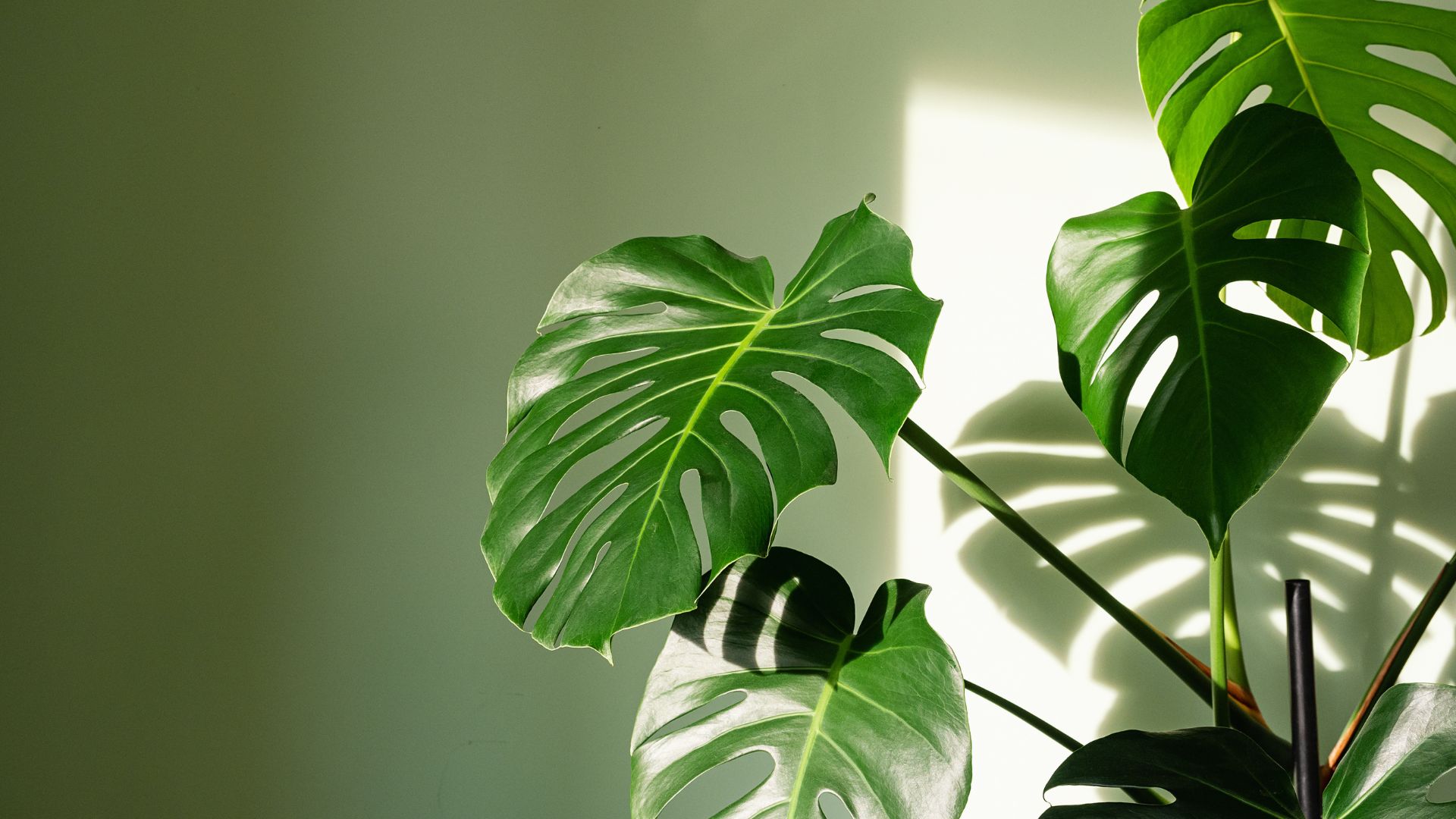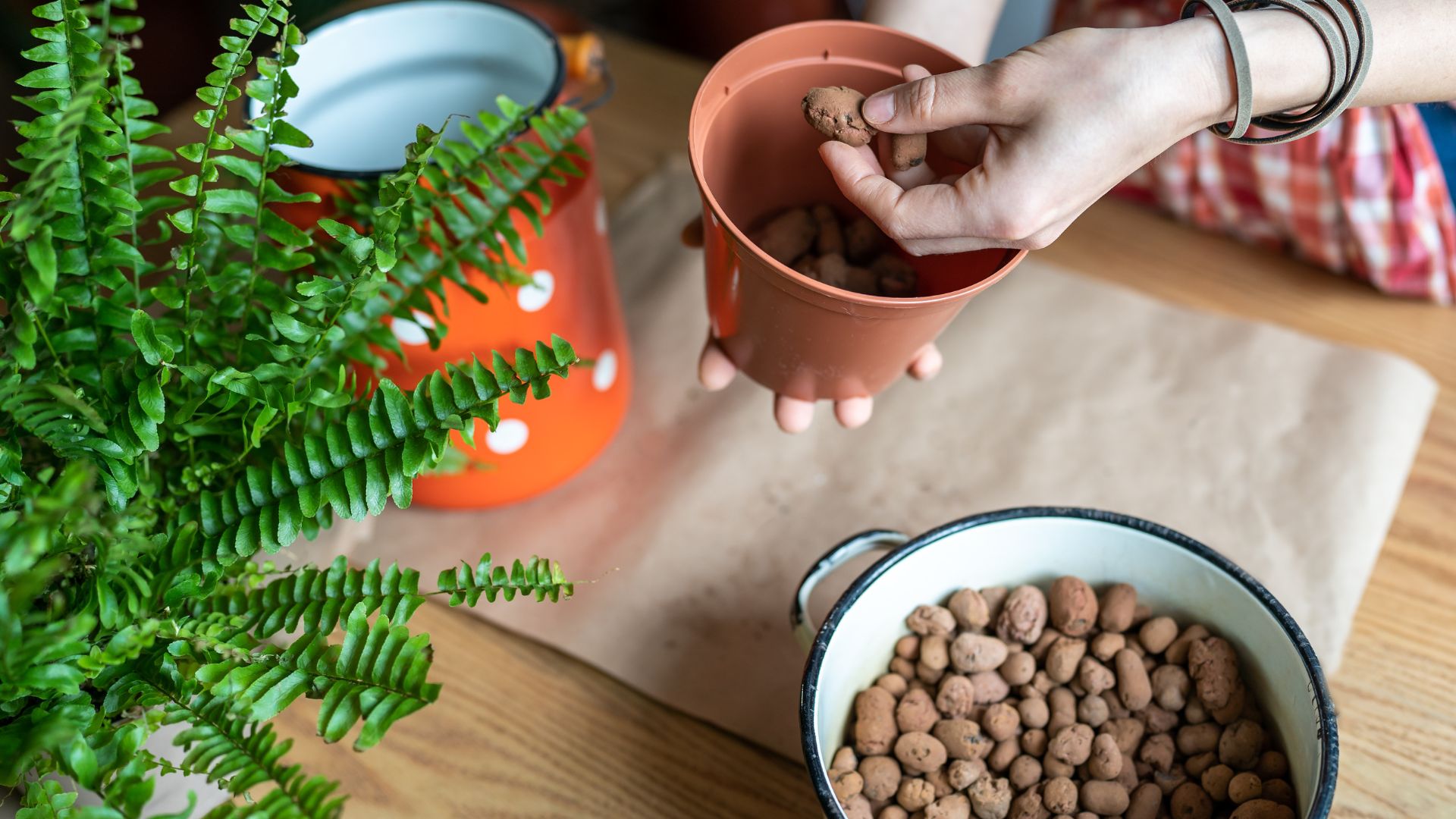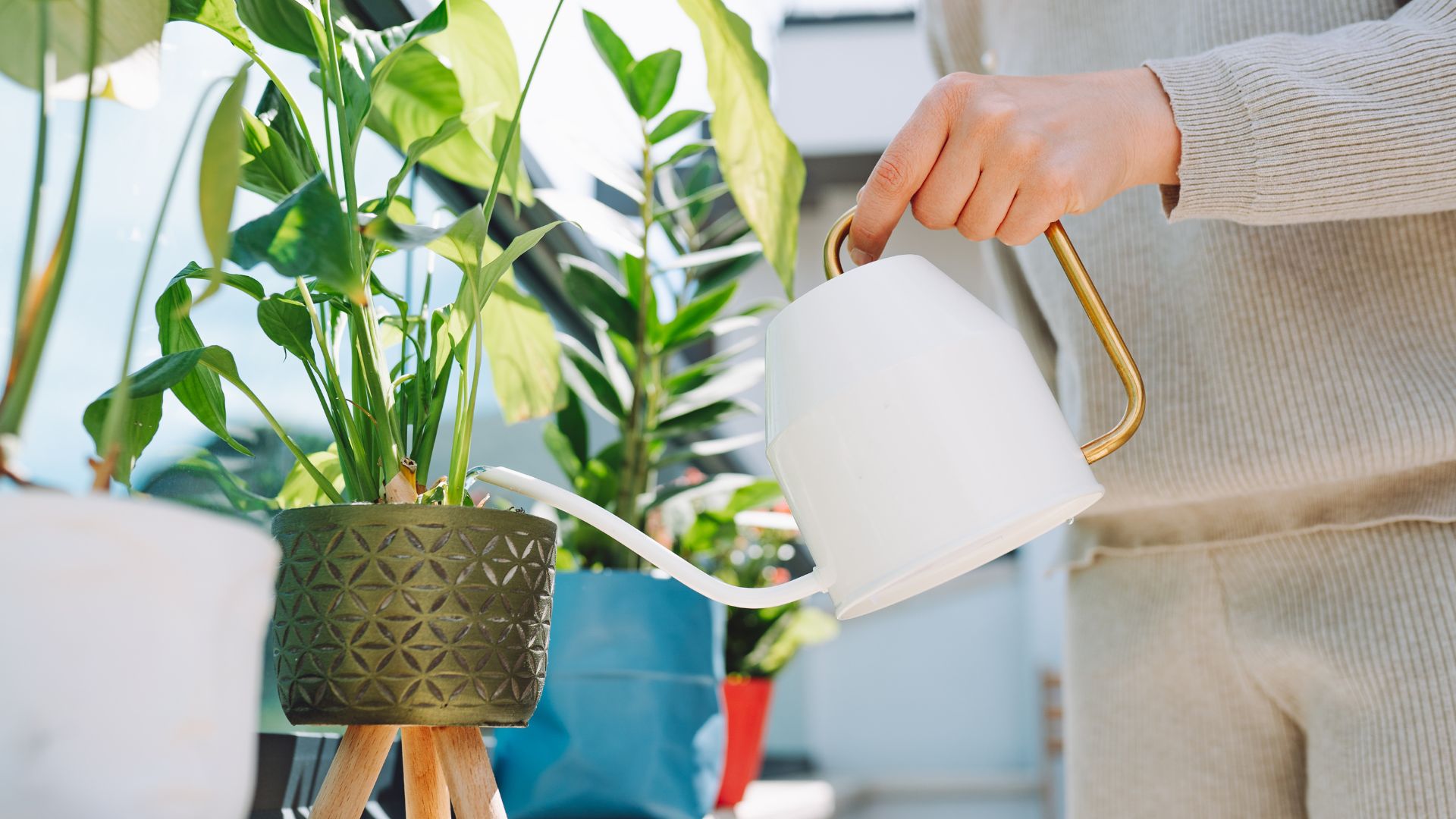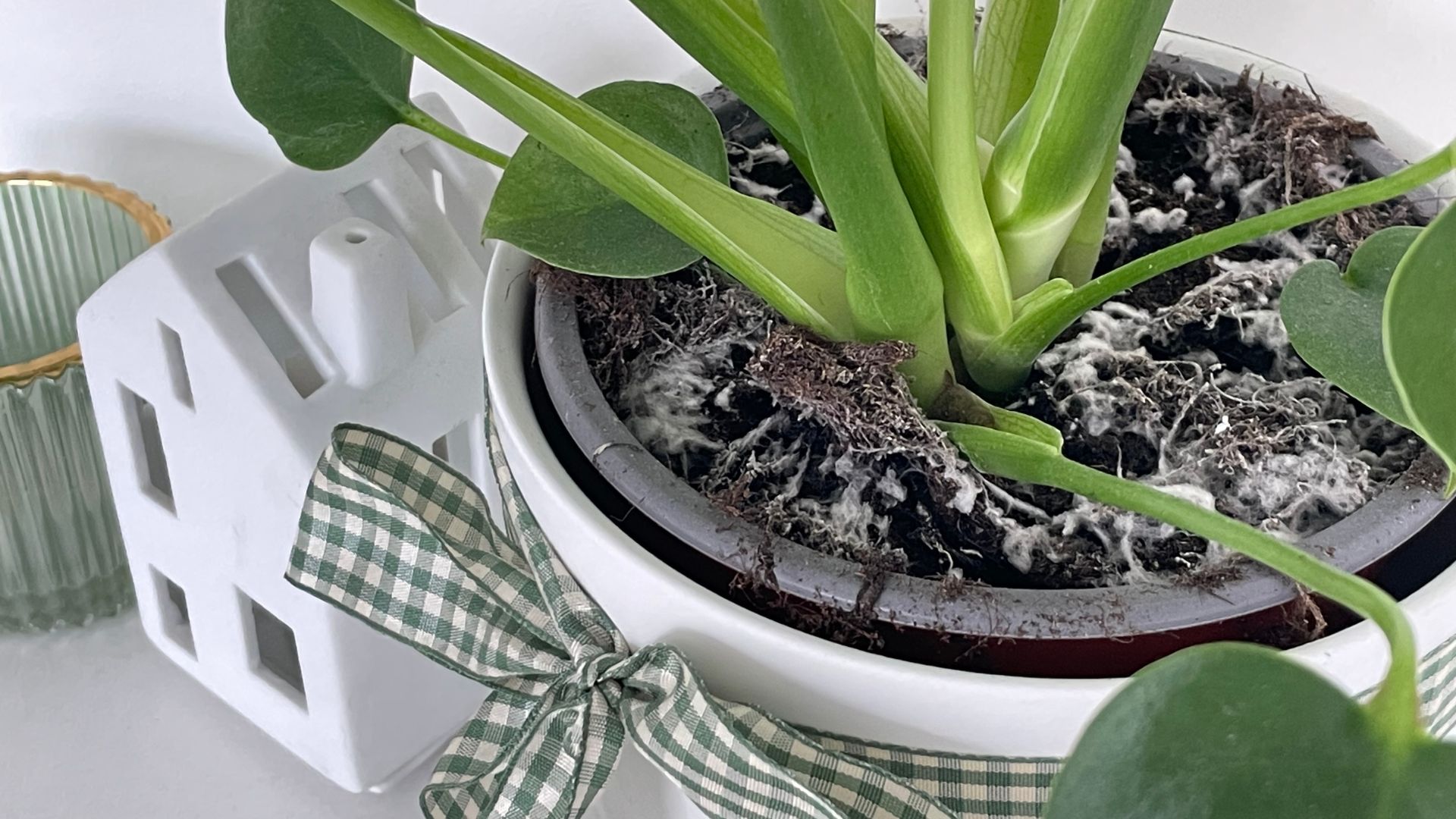Why does my plant have mould on the soil? Horticulture experts reveal the answers behind furry topsoil
The five reasons your houseplant might have started growing mould on its topsoil and how to prevent it


Finding mould anywhere in your home causes quite the shock, so it's no surprise it causes alarm bells to sound when it appears on your beloved houseplant's soil.
When you surround yourself with the best indoor plants for your health and wellbeing you'll no doubt be doing everything in your power to ensure they thrive and are properly cared for. So when you come across a thin layer of mould on your plant soil you may start wondering why it's there, if it is a bad sign and what steps you can take to remove it.
Fear not, similar to panicking why your peace lily tips are turning brown to feeling disheartened when your monstera leaves turn yellow – there is always a cause and solution.
We spoke to the plant experts to get to the bottom of this shocking mould and understand how it gets there in the first place.
Why does my plant have mould on the soil?
It's important to check on your plants regularly to examine their leaves, stalks and more crucially their soil. Not having a consistent care routine is one of the most common houseplant mistakes and will lead to damaged leaves amongst other things.
When you notice mould on the topsoil, it may not be cause for concern however it does mean that something isn't right with how you're caring for the plant. This is why we spoke to plant experts to find out exactly what could be causing the mould growth in your potted plants – and more importantly, how to prevent it from happening again.
1. Insufficient sunlight

Sunlight plays one of the biggest parts in any plant's life, the tricky part however is balancing how much sunlight each plant needs. Too much sunlight may be the reason your monstera tips are turning brown and yet it might also be the reason it is growing mould on its soil due to a lack of sunlight.
Sign up to our free daily email for the latest royal and entertainment news, interesting opinion, expert advice on styling and beauty trends, and no-nonsense guides to the health and wellness questions you want answered.
"Insufficient sunlight causes mould to grow on top of the soil. More sunlight makes the air drier, so mould can't grow as easily or as much," explains Jane Dobbs, lead gardener at Allan's Gardeners.
2. Lack of aeration
Similar to sunlight, a lack of airflow to the plant can be a huge issue when it comes to growing mould. In the same way, you'd know how to prevent mould in your wardrobes, the same applies to plants.
Prioritising air circulation is one of the best ways to limit mould growth. Jane says, "In the summer, open the window if the temperatures aren't too extreme if the plant is on a windowsill. The same effect can be achieved with a small fan blowing across your pots."
She also recommends spacing out your houseplants so that they all have an equal chance of getting that much-needed fresh air.
3. Improper drainage

A lack of efficient drainage can quickly cause issues for not only your plant's roots and leaves but its soil too. The same as why your orchid leaves are turning yellow, improper drainage will cause problems with the moisture levels of your soil.
"The health of your plant depends on how well water drains through it," says Jane. "It's easy for mould to grow in soil that doesn't drain well or does not dry out properly."
Drainage is so important that without it your plants will soon start showing signs of decay such as yellow or brown leaves and in particularly bad cases you will start to notice root rot. That is so often the case when bay tree leaves turn brown for example.
4. Overwatering
As is true with sunlight, too much water is also one of the main causes of topsoil mould. Craig Morley, a gardening expert from Budget Seeds, says, "Mould growth can usually be attributed to the soil being overly wet, which can be a result of overwatering."
Pair this with poor drainage and you'll have one unhappy plant, knowing how often to water your indoor plants is crucial to their growth. Even plants that help with condensation in every room will need frequent watering.
5. Fertiliser

Although you may think of fertiliser as something to be used outside, perhaps thinking of how you use teabags in the garden, many houseplants will also benefit from the added nutrients.
"Some kinds of fertilisers that are used for houseplants can increase the development of mould, as it will feed existing bacteria and fungi," explains Craig. He even goes on to point out that this mould is not always a bad thing and can actually in some cases help with soil health.
FAQ
How to get rid of mould on topsoil
Although not all mould is cause for concern, as we'll discuss in more detail below, you may still want to take it off your plants just in case. Craig explains how removing mould differs depending on why you think it's there in the first place. So it's important to discover the root of the problem first.
Craig says, "If you think that poor drainage is the cause of mould, you can try replacing all of the soil to provide your houseplant with a better draining mixture, or repot the plant into a pot that has more drainage holes (with fresh soil)."
However, if you don't want to replace all the soil you can simply scrape away the mouldy areas and dispose of just those bits. Failing that, Craig suggests purchasing some fungicide, but it does come down to ensuring you've identified the main cause of the mould and work to prevent it from recurring.
How do I stop mould coming back on my plant soil?
There are a few ways you can prevent mould from reappearing on your topsoil, the most obvious being knowing how to care for your plant properly. This means a balanced, well-suited care routine that includes watering, sun exposure, air flows and so on.
For example, mastering how to care for an orchid will differ wildly from knowing how to care for a peace lily - just something to keep in mind.
"You should inspect your plants regularly, especially during periods of high humidity to detect soil mould early on. The use of chemical treatments should only be a last resort, as they can disrupt soil ecosystems and harm beneficial bacteria," says Jane.
When going for the treatment route, it's always best to keep remedies as natural as possible so no further damage is caused to the plant.
We recommend using the Patch Plants Plant care mist, it's safe for all plants and has over 17 essential ingredients that promote good plant health.
Is mould always bad on plant soil?
Here's the good news, mould on your plant's soil is not always a bad omen or indicator of poor health. Depending on the mould's appearance and location, it can actually be rather harmless.
Jane explains that not all moulds are toxic to plants, she says, "Some moulds are just signs of decomposition in the soil and pose no threat to plants. A few patches of mould will not hurt the plant, especially if they're promptly removed."
White mould is usually considered safe for plants, it is the grey-looking mould that Craig warns about. He says, "If the soil has grey mould, which has a more dusty look and is often present on older parts of your plant, this can be more of a concern. However, grey mould is rare, so you should not be overly worried if you are caring for plants properly."
Keeping on top of your plant care, whether that is knowing how to clean plant leaves or what type of food to give them, will ultimately keep the toxic mould at bay. Just be sure to keep a look out for the grey stuff!

Whilst mould on the whole shouldn't signal danger for your plant, no matter what the colour it's best to act quickly when you see it on your plant's soil.
Craig says, "Excessive mould growth can potentially begin to compete for nutrients in the soil, which can hinder plant growth over time. It may also increase the risk of diseases and attract pests such as gnats."
Whether it's one of the hardest houseplants to keep alive or one of the easiest indoor plants to care for finding the cause quickly and removing it will ensure your plant lives a long mould-free life.

Emily joined woman&home as a staff writer after finishing her MA in Magazine Journalism from City University in 2023. After writing various health and news content, she now specialises in lifestyle, covering unique cleaning hacks, gardening how-tos, and everything to help your houseplants thrive.